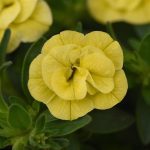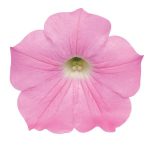Purslane, Yellow
$7.99
Discount per quantity
| Quantity | 3 - 8 | 9 - 14 | 15+ |
|---|---|---|---|
| Price | $7.75 | $7.51 | $7.19 |
| % Discount | 3% | 6% | 10% |
Description
Bursts of Sunshine: Growing and Loving Yellow Purslane
Welcome to the World of Golden Blooms
Yellow purslane is a cheerful, heat-loving plant that spreads like a living sunset across garden beds, rock walls, and patio pots. Its bright petals open wide when the sun shines and fold up as evening cools the air. This daily rhythm makes the plant feel almost alive, as if it is greeting you each morning. Better still, yellow purslane asks for very little yet gives back color, texture, and even tasty leaves.
In this deep-dive guide, we will explore every corner of its life—what it looks like, why it thrives in tough spots, and how you and I can keep it blooming from spring’s first warmth until fall’s gentle fade. Let’s dig in together and paint our spaces gold.
Meet Yellow Purslane
Yellow purslane (Portulaca oleracea or Portulaca umbraticola, depending on variety) is a low, trailing succulent. Stems sprawl out like spokes on a wheel, hugging the ground and weaving a soft mat. Leaves are small, paddle-shaped, and thick with water-saving juice. Many gardeners compare the foliage to tiny jade leaves.
The flowers steal the show. Each simple bloom has five rich yellow petals, forming a cup that glows in full sun. Blossoms measure about an inch across—small, yes, but produced in huge numbers. When temperatures climb above 90 °F, other plants wilt. Purslane, on the other hand, seems to clap its leaves and ask for more heat.
Colors vary too. Some modern cultivars mix yellow with pink or orange streaks. Others offer double blooms that look like miniature roses. But pure yellow remains a classic—the color of fresh lemons and happy emojis.
Why We Love This Golden Groundcover
- Heat hero: Thrives in scorching summers when petunias fade.
- Drought defender: Stores moisture in its stems, so it can handle skipped waterings.
- Fast cover: Fills bare soil in weeks, blocking weeds and cooling roots beneath.
- Pollinator magnet: Bees, hoverflies, and tiny native wasps flock to its pollen-rich centers.
- Edible bonus: Tender leaves taste lemony and crisp, perfect in salads or stir-fries.
- Container star: Trails over pots, baskets, and window boxes in a flowing cascade.
By choosing yellow purslane, we invite brightness, resilience, and a touch of culinary fun into our gardens.
Site Selection: Where Sunshine Reigns
Yellow purslane demands one thing above all—sun, and lots of it. Give it at least six hours of direct light each day; eight or more is even better. Place plants in south-facing beds, on sunny slopes, or on hot patios. Too much shade leads to lanky growth and fewer blooms.
Wind is rarely a problem. The stems are low and flexible, bending without breaking. Coastal breezes, rooftop gusts, and open fields all suit purslane well.
Soil Secrets: Lean and Well-Drained
We often feel compelled to pamper plants with rich, dark loam. Resist that urge here. Yellow purslane shines in sandy or gritty soil, which drains fast after rain. If you garden in heavy clay, mix in coarse sand or fine gravel before planting. Raised beds filled with cactus mix make an easy shortcut.
pH is forgiving—anywhere from 5.5 to 7.5 works. The key is drainage. Root rot is rare when soil stays airy and dry between waterings.
Planting Step-by-Step
From Seed
- Timing: Sow outdoors after danger of frost, when nights stay above 50 °F.
- Prep: Rake the top inch of soil smooth. Do not bury seeds deeply; they need light to sprout.
- Sow: Sprinkle seeds thinly and press them onto the surface.
- Moisture: Mist gently until germination, which happens in 7–10 days.
- Thin: Once seedlings have two sets of leaves, space them 8 inches apart.
From Transplants
- Dig holes equal to the root ball’s depth.
- Place plants and backfill with native soil.
- Water well once to settle roots.
- Mulch lightly with fine gravel to keep soil from splashing onto leaves.
Everyday Care
Water
During the first two weeks, keep soil slightly damp so roots establish. After that, water deeply but infrequently. Let the top inch dry before the next soaking. In humid regions, plants may thrive on rainfall alone.
Light Feeding
A lean diet makes stronger plants. Mix a slow-release, low-nitrogen fertilizer (such as 5-10-10) into the soil at planting time. That single dose usually lasts all season. If you notice pale leaves mid-summer, offer a half-strength liquid feed rich in phosphorus to boost blooming.
Temperature
Ideal range is 70–100 °F. The plant keeps flowering until frost. When nights dip below 40 °F, growth slows and leaves may redden. You can dig a few stems and overwinter them indoors on a sunny sill if you wish.
Pruning
Pinch back stems every few weeks to encourage branching. Remove spent blooms if you want a tidy look, though the plant self-cleans fairly well. If a section becomes leggy, shear it by half; new shoots will fill in quickly.
Troubleshooting Common Problems
| Problem | Likely Cause | Simple Fix |
|---|---|---|
| Mushy stems | Overwatering or poor drainage | Water less, amend soil with sand |
| Faded flowers | Too much shade | Move pot or trim nearby plants |
| Sparse blooms | Excess nitrogen | Stop fertilizing; switch to bloom booster |
| Aphids on tips | Tender growth attracts pests | Spray with strong water jet or insecticidal soap |
| Leaf spots | Prolonged humidity | Space plants, improve air flow |
Edible Adventures
Many of us are surprised to learn that yellow purslane is not only pretty but also packed with nutrition. Leaves hold omega-3 fatty acids, vitamin C, and a gentle tang. Harvest in the cool morning for best flavor.
- Raw crunch: Add chopped leaves to tuna salad or wrap them with sliced tomato and cheese.
- Quick sauté: Toss stems in a hot pan with garlic for two minutes; finish with lemon.
- Soup thickener: The mucilaginous juice creates a silky texture.
Always rinse well, and avoid harvesting from areas treated with chemicals.
Design Ideas We Can Try
- Sunny carpet: Plant at the front of mixed borders to hide bare soil between taller perennials.
- Rock star: Let stems weave through crevices in a dry stone wall.
- Color bowls: Pair yellow purslane with purple heart (Tradescantia pallida) for high contrast.
- Herb spiral edges: Use it as a soft border around rosemary and thyme.
- Living mulch under tomatoes: Roots stay shallow, so they do not rob big crops of nutrients.
Because the plant spreads no more than 6–8 inches tall, it never blocks our view of showier specimens behind it.
Propagation: Share the Sunshine
Cuttings
- Snip a 3-inch tip below a leaf node.
- Let it air-dry for 24 hours so the cut end callouses.
- Insert into moist sand or perlite.
- Keep warm and bright; roots form in one week.
Division
Older mats can be pulled apart gently and replanted elsewhere. Water well for the first week to reduce transplant shock.
Self-Seeders
If you leave a few flowers to go to seed, tiny black seeds will drop and sprout the next spring. In colder zones, collect seed heads and store them in paper envelopes indoors.
Overwintering Options
Yellow purslane is frost-tender. In zones 9–11, it survives mild winters outdoors with a light mulch. Everywhere else, treat it as an annual or bring it inside:
- Pot up a few runners before the first frost.
- Place the pot in the brightest south-facing window you have.
- Water lightly once every two weeks, just enough to prevent shriveling.
By March, start feeding again and pinch the tips. Soon you’ll have bushy starts ready to move back outside.
Quick-Fire FAQ
How much space does each plant need?
Eight to ten inches is plenty. Stems spread out and knit together.
Will it invade my lawn?
Cultivated purslane stays where we plant it if we deadhead seeds. Pull any volunteers early.
Can I grow it from grocery-store purslane?
Yes! Fresh sprigs can root in water, then move to soil once roots are an inch long.
Is it safe for pets?
In small amounts, yes. Dogs and cats usually ignore it. Large servings may cause mild stomach upset, so offer toys instead of leaves for playtime.
Does it need pruning?
Only to shape or refresh growth. Pinching encourages more flowers.
Let’s Keep the Glow Going
Yellow purslane shows us that beauty and toughness can share the same soil. With bright sun, quick-draining earth, and a sip of water now and then, it rewards us with nonstop blooms and edible greens. We can tuck it into tiny corners, spill it over pots, or blanket whole beds—wherever we crave a splash of gold.
When we care for this plant, we also care for ourselves. We pause in the heat, watch petals open, and feel a simple joy flow back to us. So let’s spread that joy, one sunny stem at a time.
Golden Petals, Happy Hearts
Additional information
| Weight | N/A |
|---|---|
| Options | Unrooted Cutting – 9 Count, Starter Plug – 3 count, 4 in. (16.9 fl. oz.) Pot |





